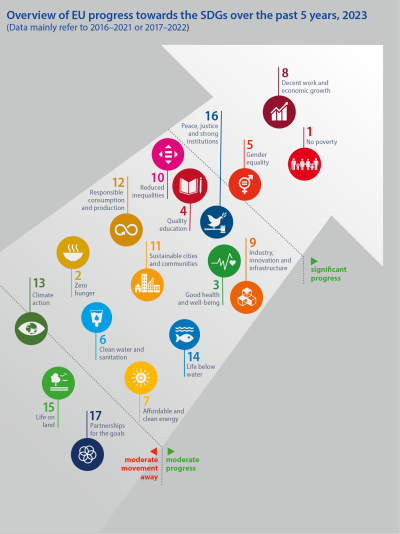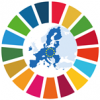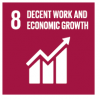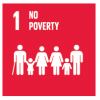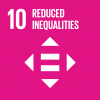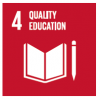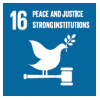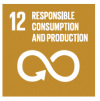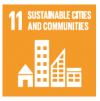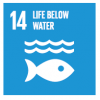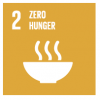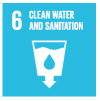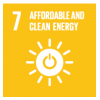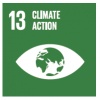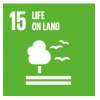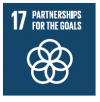SDG - Synopsis
Data extracted in April 2023.
Planned article update: June 2024.
Highlights
This article is a part of a set of statistical articles, which are based on the Eurostat publication ’Sustainable development in the European Union — Monitoring report on progress towards the SDGs in an EU context — 2023 edition’. This report is the seventh edition of Eurostat’s series of monitoring reports on sustainable development, which provide a quantitative assessment of progress of the EU towards the SDGs in an EU context.
Full article
Background
The 2030 Agenda for Sustainable Development and its 17 Sustainable Development Goals (SDGs), adopted by the United Nations (UN) in September 2015, is the world’s roadmap for achieving sustainable development in this decade. The European Union (EU) has fully committed itself to delivering on the 2030 Agenda, and the SDGs form an intrinsic part of the European Commission’s work programme and the Political Guidelines of Commission’s President Ursula von der Leyen [1]. In this context, the EU will also present its first Voluntary Review on the implementation of the 2030 Agenda at the United Nations’ (UN) High-Level Political Forum in July 2023.
Monitoring is an essential component in realising the 2030 Agenda’s vision, both globally and in the EU, by assessing and visualising the progress made so far towards the 17 SDGs. Since 2017, Eurostat has been preparing annual reports monitoring the progress towards the SDGs in the EU context. This 2023 edition is the seventh report in this series, analysing the EU’s progress towards the goals based on the official EU SDG indicator set.
Reflecting the timespan of the 2030 Agenda, this report aims to present an objective assessment of whether the EU — according to the selected indicators — has progressed towards the SDGs over the past 15-year period. Additionally, short-term trends over the most recent five-year period of available data are presented to provide an indication of whether a trend has been persistent or has shown a turnaround at a certain point in time. The report consequently focuses on the trends over the past five- and 15-year periods. Given the time lag of the available data, these mainly refer to the periods up to 2021 or 2022. While the impacts of the COVID-19 pandemic are thus largely visible for most of the indicators, more recent developments such as those caused by Russia’s military aggression against Ukraine are only partly reflected in the available data.
How has the EU progressed towards the SDGs?
This synopsis chapter provides a statistical overview of progress towards the SDGs in the EU. Because a long-term assessment is not possible for a number of indicators due to limited data availability, the progress at goal-level presented in this chapter is assessed over the most recent five-year period (‘short-term’) based on the EU SDG indicators. Figure 1 shows the pace at which the EU has progressed towards each of the 17 goals over this short-term period according to the selected indicators. The method for assessing indicator trends and aggregating them at the goal-level is explained in Annex I in the PDF version of this publication.
Over the five-year period assessed, the EU has made significant progress towards ensuring decent work and economic growth (SDG 8) and reducing poverty (SDG 1), as well as towards improving gender equality (SDG 5). Good progress has also been achieved towards reducing inequalities (SDG 10), ensuring quality education (SDG 4) and fostering peace and personal security within the EU’s territory and improving access to justice and trust in institutions (SDG 16). The EU has also seen good progress towards the goals on health and well-being (SDG 3), despite of the setbacks caused by the COVID-19 pandemic, and on innovation and infrastructure (SDG 9). Progress towards the remaining goals was less significant, as shown in Figure 1. Overall, the goal-level assessment in this year’s SDG monitoring report shows that the EU has progressed strongly towards many socio-economic goals over the most recent five-year period of available data, while trends in the environmental domain have been less favourable.
More progress is expected for three goals — climate action (SDG 13), life on land (SDG 15) and global partnerships (SDG 17). Regarding climate action (SDG 13), the EU has set ambitious and unparalleled climate targets for 2030, which, as compared with past trends, will require more efforts. The EU has already put in place the policy measures to deliver these additional efforts, notably via the ‘Fit for 55’ package. In the area of energy, the EU has also set more ambitious targets for 2030 [2]. This implies that stronger progress is expected to be visible in the coming years in the area of energy efficiency and renewable energies in the EU. Concerning life on land (SDG 15), even though terrestrial protected areas have increased since 2013, additional efforts are needed to reverse the degradation of ecosystems. Regarding partnerships for the goals (SDG 17), the trend partially reflects cyclical effects, notably the increase in public debt resulting from the COVID-19 crisis.
For each of the goals, the following section provides a brief overview of the main indicator trends standing behind the goal-level assessment. The goals are presented in order of aggregated indicator trend assessments, from best to worst.
Summary at goal level
SDG 8 ‘Decent work and economic growth’ shows continued signs of recovery after the pandemic’s impact on the economy and the labour market, with further progress in 2022 despite the impacts of Russia’s military aggression against Ukraine. After the economic recovery in 2021, GDP per capita continued to grow strongly in 2022, by 3.3 %, and investment reached a new peak of 23.2 % of GDP in that year. This favourable development is also reflected in the labour market, with the EU’s employment rate reaching a new record high of 74.6 % in 2022. Similarly, both the EU’s long-term unemployment rate and the share of young people neither in employment nor in education and training (NEET) fell to new record lows in 2022. The EU thus seems well on track to meeting its respective 2030 targets for employment and NEET rates. In the area of decent work, both the incidence of fatal work accidents and the share of ‘working poor’ have seen clearly favourable developments in the time period assessed. The EU’s material footprint, however, had been rising until 2019, and most recent data still only reflect the reduced economic activity in 2020. Data on domestic material consumption suggest resource use has risen to almost pre-pandemic levels in 2021 alongside the economic recovery.
The EU’s situation regarding SDG 1 ‘No poverty’ is characterised by considerable improvements in all poverty dimensions monitored in this report as well as an increasing share of people being able to meet their basic needs. Most of these improvements took place in the period up to 2019, while poverty rates have remained rather stable in 2020 and 2021 [3]. In the area of multidimensional poverty, trends in the five-year period assessed show that fewer people were affected by monetary poverty, suffered from severe material and social deprivation or lived in (quasi-)jobless households. This resulted in a marked improvement concerning the overall risk of poverty or social exclusion across the EU, even though stronger progress will be necessary to meet the target of lifting at least 15 million people out of poverty or social exclusion by 2030. In the area of basic needs, the share of people overburdened by their housing costs or facing severe housing deprivation has fallen since 2015. Additionally, the proportion of people reporting unmet needs for medical care was lower in 2021 than five years earlier, even though the rate has risen slightly since 2017.
SDG 5 ‘Gender equality’ shows a quite favourable picture in most of the areas monitored. Regarding employment, women’s hourly earnings are catching up with those of men, and the gap between men and women who are outside the labour force due to caring responsibilities has narrowed since 2017. Similarly, the gender employment gap has narrowed since 2017, even though stronger progress will be necessary for the EU to meet its target of halving this gap by 2030. Women also continue to increasingly occupy leadership positions, as shown by considerable growth in both the shares of women in national parliaments and in senior management positions of the largest listed companies. Despite these improvements, however, the gender situation remains far from parity in both areas. In the area of education, the gender gap is reversed, with more young women than men attaining secondary and tertiary education. While this gap has slightly narrowed since 2017 for early school leaving, men continue to fall further behind women in terms of tertiary educational attainment.
Developments in the area of SDG 10 ‘Reduced inequalities’ reveal a quite favourable picture over the most recent five-year period of available data. Income inequalities within countries improved between 2016 and 2021, as shown by the narrowing of the income gaps between the richer and the poorer population groups. Similarly, the depth of poverty [4] reduced, and the poverty gap between rural and urban areas narrowed in the EU. Data on economic disparities between EU countries also paint a favourable picture, showing a continued convergence of Member States in terms of GDP per capita and household income, even though the trend for GDP per capita was temporarily interrupted by the repercussions of the COVID-19 pandemic. The labour market integration of migrants from outside the EU largely improved alongside the economic recovery in 2021 and 2022. The gap between non-EU citizens and EU home-country nationals has narrowed for monetary poverty (compared with 2016) as well as for the employment rate and for young people neither in employment nor in education and training (NEET), while it has slightly widened for the rate of early school leavers (all compared with 2017).
SDG 4 ‘Quality education’ is characterised by mostly favourable developments over the five-year period assessed. Regarding participation in education, the EU is well on track to meet its 2030 targets for early leavers from education and training and tertiary educational attainment. Adult learning has also increased since 2017, showing particularly strong growth in 2022. However, the share of children participating in early childhood education has grown slowly in the EU since 2015, and stronger progress will be necessary in the coming years to meet the respective 2030 target. Moreover, trends have been quite unfavourable for educational outcomes. The proportion of low achieving pupils in reading, maths and science as measured in the OECD’s PISA study increased between 2015 and 2018, moving the EU further away from its target of reducing these shares to 15 % by 2030. In addition, the share of adults with at least basic digital skills stood below 55 % in 2021 and thus remains far from the target of raising this share to 80 % by 2030.
The EU has continued to make good progress towards SDG 16 ‘Peace, justice and strong institutions’, even though some subjective measures of citizens’ perceptions regarding the EU’s and Member States’ institutions have shown recent signs of deterioration. Life in the EU has become safer over the past few years, as deaths due to homicide or assault and the perceived occurrence of crime, violence and vandalism in European neighbourhoods have fallen considerably. Furthermore, government expenditure on law courts has increased. However, the perceived independence of justice systems in Member States slightly deteriorated in 2022. Additionally, the EU’s rating in the Corruption Perceptions Index has been stagnating, even though EU countries continue to rank among the least-corrupt globally. Citizens’ confidence in the European Parliament and the European Commission has somewhat deteriorated compared with pre-pandemic levels, while the European Central Bank has slightly gained in trust.
The assessment of SDG 3 ‘Good health and well-being’ is affected by the impacts of the COVID-19 pandemic. While the EU’s healthy life expectancy was on the rise until 2019, it declined by 0.6 years in 2020, down to 64.0 years. People’s self-perceived health also slightly declined in 2021, but remained above pre-pandemic levels. The pandemic’s strongest impact is visible in the EU’s avoidable mortality rate, which increased considerably in 2020 due to COVID-19 related deaths. Road traffic deaths have also risen in 2021 after the lockdown-induced reduction in mobility patterns, and stronger progress will be necessary for the EU to meet its respective 2030 target. The other causes of mortality monitored in this report – deaths due to HIV, tuberculosis and hepatitis, fatal work accidents and premature deaths due to exposure to fine particulate matter – have not (or to a lesser extent) been affected by the pandemic and continue to show favourable developments. The same is true for most of the health determinants monitored. The share of people suffering from noise disturbance has fallen slightly in recent years, as has the share of smokers. In contrast, the share of obese and overweight people has been growing in the EU. Trends in access to health care are still favourable, even though the share of people reporting unmet needs for medical care has increased slightly since 2017.
SDG 9 ‘Industry, innovation and infrastructure’ is characterised by favourable trends in most of its indicators, with the main exception of the area of sustainable transport. As regards R&D and innovation, the EU has seen continued but slow growth in its R&D expenditure (both in absolute terms and in relation to GDP), and stronger efforts will be necessary for the EU to meet its respective 2030 target of dedicating 3 % of its GDP to R&D. The remaining indicators on patent applications to the European Patent Office, the share of R&D personnel in the labour force and the share of young people with tertiary education have improved considerably in recent years. As regards the sustainability transformation of the EU’s industrial sector, the air emissions intensity of the manufacturing sector — referring to the sector’s fine particulate matter emissions relative to its gross value added (GVA) — has improved, and the GVA of the environmental goods and services sector has continued to grow more strongly than the total economy. Developments are mixed in the area of sustainable infrastructure. While both passenger and freight transport have shifted further away from environmentally friendly modes such as buses, trains or inland waterways, the share of households enjoying high-speed internet connections has grown considerably since 2016.
Trends concerning SDG 12 ‘Responsible consumption and production’ have been somewhat mixed over the past few years. The EU’s material footprint, which estimates the demand for the global extraction of materials induced by the consumption of goods and services within the EU, had been on the rise until 2019, but temporarily fell in 2020 alongside the reduced economic activity caused by the pandemic. Data on domestic material consumption suggest resource use rose to almost pre-pandemic levels in 2021 following the economic recovery. Similarly, and despite a slight drop in 2020, consumption of hazardous chemicals has grown since 2016. While the average carbon dioxide (CO2) emissions efficiency of new passenger cars had shown considerable improvement until 2020, a methodological change in the testing procedure prevents a comparison with the most recent data for 2021 [5]. Trends in waste generation and management are also mixed. Similar to the material footprint, total waste generation had been on the rise in the EU until 2018 but fell in 2020, likely as a result of lower economic activity. The EU’s circular material use rate has stagnated below 12 % over the past few years, meaning the EU is currently not on track to doubling this rate by 2030 relative to 2019. On a positive note, the environmental goods and services sector has continued to outperform other economic sectors in terms of growth in gross value added, and has continued its growing trend even in 2020, the first year of the pandemic in Europe.
The indicators used for monitoring SDG 11 ‘Sustainable cities and communities’ show largely favourable developments concerning the quality of life in cities and communities, whereas the picture is more mixed as regards sustainable mobility and environmental impacts. Trends for severe housing deprivation, premature deaths due to exposure to fine particulate matter as well as the occurrence of crime, violence and vandalism in the neighbourhood have been clearly favourable over the past few years. Additionally, the perceived exposure to noise has slightly decreased. In the area of sustainable mobility, trends have been impacted by changes in mobility patterns due to the COVID-19 pandemic. Road traffic deaths increased in 2021 after reaching a lockdown-induced low in 2020, but remained below pre-pandemic levels. Yet, stronger efforts will be necessary for the EU to meet its respective 2030 target. Additionally, public passenger transport modes (buses and trains) had already been losing shares to cars before the pandemic, and 2020 saw a further strong drop as a result of changed mobility habits due to COVID-19 and related restrictions. Settlement areas have kept spreading, not only in absolute terms but also per capita, meaning that land take has increased faster than the EU population. Additionally, the increase in the EU’s recycling rate of municipal waste has slowed in recent years, putting the EU off track to meeting its respective target by 2030.
The EU has made only moderate progress towards SDG 14 ‘Life below water’, due to quite divergent developments in the areas monitored. Trends in marine conservation and sustainable fisheries are generally favourable. The extent of marine protected areas has grown considerably since 2012, and the EU thus appears on track towards meeting the target of 30 % of marine waters being under protection by 2030. However, it needs to be acknowledged that the available data do not provide an indication of the sites’ conservation status nor the effectiveness of the protection they offer to species and habitats. Model-based indicators on sustainable fisheries provide an improving picture as regards the trends of fish stock biomass and fishing pressure in EU marine waters, referring to both the North-East Atlantic and the Mediterranean and Black Sea (although the situation in the latter remains less favourable). Trends in the area of ocean health are, however, less positive. Due to the absorption of CO2 into the world’s oceans, the mean surface seawater acidity is continuing to increase, and in 2021 reached another unprecedented high over pre-industrial levels. Moreover, the share of EU marine waters affected by eutrophication has risen strongly in recent years. On a more positive note, the share of coastal bathing sites with excellent water quality has increased slightly in the EU Member States since 2016.
Monitoring SDG 2 ‘Zero hunger’ in an EU context focuses on malnutrition, the sustainability of agricultural production and its environmental impacts. Trends in the area of malnutrition remain unfavourable, with a clear increase in the share of obese people in the EU since 2014. In contrast, trends concerning the viability and sustainability of agricultural production have been favourable over the past five years. The labour productivity of the EU’s agricultural sector has improved and public investments in agricultural R&D have increased. In addition, the area under organic farming has grown steadily, although stronger progress will be required to meet the target for 25 % of the EU’s total farmland to be farmed organically by 2030. However, some adverse impacts of agricultural production remain visible in the EU, most notably the continued and dramatic decline of common farmland birds. On a more positive note, the EU land area at risk of severe soil erosion by water has decreased slightly, as have the ammonia emissions from agriculture. Additionally, nitrate concentrations in EU groundwater bodies have shown a slight decreasing trend since 2015.
Available data for SDG 6 ‘Clean water and sanitation’ paint a rather mixed picture for the EU. On the positive side, the share of people without appropriate sanitation facilities in their households has been steadily decreasing in the EU, and connectivity to at least secondary waste water treatment has been improving slowly. However, trends regarding water quality are less favourable in the EU. While the biochemical oxygen demand in rivers and the nitrate concentrations in European groundwater bodies have decreased since 2015, phosphate concentrations in rivers have risen more or less continuously since 2013. Additionally, the share of inland bathing sites with excellent water quality has been falling in the EU Member States since 2017. Trends in water scarcity are also somewhat unfavourable, with the EU’s water exploitation index showing a slightly increasing trend in recent years.
The goal-level assessment of SDG 7 ‘Affordable and clean energy’ is influenced by two main factors. Firstly, energy consumption in the EU has increased in 2021 alongside the economic recovery, after reaching a historic low in the pandemic year 2020. Secondly, the recent agreements between the Council and the Parliament on more ambitious energy targets for 2030 [6] mean that much stronger progress will be required in the coming years in the areas of energy efficiency and renewable energies than the one observed in the period assessed in this report (2016 to 2021). In 2021, both primary and final energy consumption increased from their 2020 low, even though consumption remained below pre-pandemic levels. Similarly, final energy consumption in households rose strongly in 2021. The increased energy demand pushed down energy productivity and the share of renewables in 2021, even though the trends since 2016 remain positive in both areas. Additionally, the EU has been able to reduce its energy import dependency since 2019, especially for natural gas and solid fossil fuels. Furthermore, access to affordable energy has kept improving in the EU, with ever fewer people being unable to afford keeping their home adequately warm. However, it is important to note that the strong increase in energy prices observed in 2022 is not yet reflected in these data.
The overall assessment of progress towards SDG 13 ‘Climate action’ is characterised by slightly more negative than positive trends in the selected indicators. While according to provisional estimates for 2021, the EU has already reduced its net greenhouse gas emissions by about 30 % since 1990 [7], stronger progress will be required to meet the ambitious 55 % reduction target for 2030. Respective additional measures are already part of the Fit for 55 package. It is important to note that this assessment does not take into account further developments such as the pathways and planned measures outlined in the National Energy and Climate Plans (NECPs) of the Member States. Additionally, the carbon removals achieved by the land use and forestry sector (LULUCF) that contribute to the overall net GHG emissions have declined in recent years. Moreover, the share of renewable energy would need to rise much more strongly than it did in the period assessed (2016 to 2021) for the EU to meet its new, more ambitious 2030 target. While the average CO2 emissions efficiency of new passenger cars had been improving considerably until 2020, a methodological change in the testing procedure prevents a comparison with the most recent data for 2021 [8]. Concerning climate impacts and adaptation, the monetary losses from weather- and climate-related disasters rose sharply in 2021. On a positive note, the number of signatories to the Covenant of Mayors for Climate and Energy continues to grow, even though the trend stalled in 2022 compared with 2021. Moreover, the EU’s contribution to climate finance for developing countries has increased almost continuously over the past few years.
The indicators selected for SDG 15 ‘Life on land’ show some slight improvements combined with a few clearly negative developments that result in an overall slightly negative goal-level assessment. While the EU’s forest area has increased, pollutant concentrations in European rivers have shown mixed trends, with improvements in the biological oxygen demand occurring alongside increases in phosphate concentrations. Regarding land degradation, pressures from land take, including soil sealing by impervious materials, have continued to intensify, while the EU land area at risk of severe soil erosion by water has shrunk slightly since 2010. Even though terrestrial protected areas have increased across Member States since 2013, the EU continues to face dramatic long-term declines in common bird and grassland butterfly populations. The overall assessment of SDG 15 in this report thus confirms the results of other stocktaking reports and evaluations, which conclude that the conservation status of ecosystems and biodiversity in the EU is unfavourable, and that the negative impacts of EU life-style patterns on (global) biodiversity are considerable [9].
The overall assessment of EU developments regarding SDG 17 ‘Partnerships for the goals’ is moderately negative. Favourable developments are only visible in two areas. EU imports from developing countries grew strongly in 2021 and 2022 after the interruption to trade flows by the COVID-19 pandemic, and the share of households enjoying high-speed internet connections has increased sharply since 2018. Developments in the remaining indicators have been moderately or clearly unfavourable. Overall EU financing to developing countries has fallen strongly since 2016, and the EU’s ratio of official development assistance (ODA) to gross national income (GNI) has not progressed towards the 0.7 % target set for 2030. Concerning financial governance within the EU, even though the EU’s overall debt-to-GDP ratio has fallen after reaching a record high in 2020 as a consequence of the COVID-19 crisis and related public spending, it remained above pre-pandemic levels in 2022. Moreover, the already low share of environmental taxes in total tax revenues declined even further and reached a new low in 2021.
Summary of short-term impacts
Previous editions of the EU SDG monitoring report have shown that already before the COVID-19 crisis, progress towards the SDGs in the EU was uneven, with some areas requiring more attention and action. In the midst of the recovery from the pandemic, the EU was hit by the consequences of Russia’s military aggression against Ukraine starting in early 2022. While the impacts of COVID-19 are now visible in most of the annual data used in the thematic chapters in this report, a dedicated section makes use of short-term (monthly and quarterly) data to show the more recent impacts of Russia’s war of aggression through 2022 and early 2023.
The EU’s response to the Russian invasion included humanitarian support by providing temporary protection to those fleeing Ukraine, financial support to Ukraine, and putting in place economic sanctions on the Russian government, companies and individuals. The majority of Europeans consider the EU’s overall response to be satisfactory [10], even though the consequences of the Russian invasion are already clearly visible in the EU. Available short-term statistics show a considerable decline in Russia’s share of EU energy imports alongside a reduction in the EU’s overall demand for natural gas. Nevertheless, despite the EU’s efforts to diversify its energy sources and reduce its dependence on Russia, the EU economy has seen a price hike for energy that has been influencing prices for housing and increasingly food products. As the Russian invasion continues even one year after it began, the long-term effects on the EU’s economic and social fabric remain to be seen. With more data becoming available, future SDG monitoring reports might present a more detailed and nuanced picture on the consequences of Russia’s military aggression against Ukraine.
Direct access to
More detailed information on EU SDG indicators for monitoring of progress towards the UN Sustainable Development Goals (SDGs), such as indicator relevance, definitions, methodological notes, background and potential linkages, can be found in the introduction of the publication ’Sustainable development in the European Union — Monitoring report on progress towards the SDGs in an EU context — 2023 edition’.
Notes
- ↑ See the introduction for a more detailed overview of the EU policy context related to the SDGs.
- ↑ The assessment in this report is based the (provisional) agreements reached by the Council and the Parliament in March 2023 regarding the energy efficiency directive (to reduce final energy consumption at EU level by 11.7 % in 2030) and the renewable energy directive (to raise the share of renewable energy in the EU’s overall energy consumption to 42.5 % by 2030).
- ↑ It needs to be noted that the trend assessment might be affected by a methodological change in the collection of data for the statistics on income and living conditions (EU-SILC) in 2020 in several countries, in particular Germany and France. Also, it needs to be noted that data on people’s income collected in 2021 refer to the year 2020, and therefore to the situation at the onset of the COVID-19 pandemic in Europe.
- ↑ The relative median at-risk-of-poverty gap (also referred to as depth of poverty) helps to quantify how poor the poor are and measures the distance between the median income of people living below the poverty threshold and the threshold itself.
- ↑ Between 2007 and 2020, data on the average CO2 emissions per km from new passenger cars were collected based on the NEDC (New European Driving Cycle) procedure. In 2021, the data collection was for the first time based on the WLTP (World Harmonised Light-vehicle Test Procedure) procedure. Compared with the former NEDC procedure, this leads to higher emission values, which are more representative of the emissions of the vehicles when used on the road.
- ↑ The assessment in this report is based the (provisional) agreements reached by the Council and the Parliament in March 2023 regarding the energy efficiency directive (to reduce final energy consumption at EU level by 11.7 % in 2030) and the renewable energy directive (to raise the share of renewable energy in the EU’s overall energy consumption to 42.5 % by 2030).
- ↑ 2021 data for greenhouse gas (GHG) emissions presented in this report have been calculated based on the approximated estimates for GHG emissions published by the European Environment Agency: EEA (2022), Approximated estimates for Greenhouse Gas emissions. The data presented here cover GHG emissions produced inside the EU territory and do not take into account those that occurred outside the EU as a result of EU consumption.
- ↑ Between 2007 and 2020, data on the average CO2 emissions per km from new passenger cars were collected based on the NEDC (New European Driving Cycle) procedure. In 2021, the data collection was for the first time based on the WLTP (World Harmonised Light-vehicle Test Procedure) procedure. Compared with the former NEDC procedure, this leads to higher emission values, which are more representative of the emissions of the vehicles when used on the road.
- ↑ See, for example, European Environmental Agency (2020), State of nature in the EU. Results from reporting under the nature directives 2013–2018; Maes, J., Teller, A., Erhard, M., Conde, S., Vallecillo Rodriguez, S., Barredo Cano, J.I., Paracchini, M., Malak, D.A., Trombetti, M., Vigiak, O., Zulian, G., Addamo, A., Grizzetti, B., Somma, F., Hagyo, A., Vogt, P., Polce, C., Jones, A., Carré, A. and Hauser, R. (2021) EU Ecosystem Assessment; and Díaz et al. (2019), Summary for policymakers of the global assessment report on biodiversity and ecosystem services of the Intergovernmental Science-Policy Platform on biodiversity and Ecosystem Services.
- ↑ European Parliament (2023), Standard Eurobarometer 98 - Winter 2022-2023: The EU’s response to the war in Ukraine.
